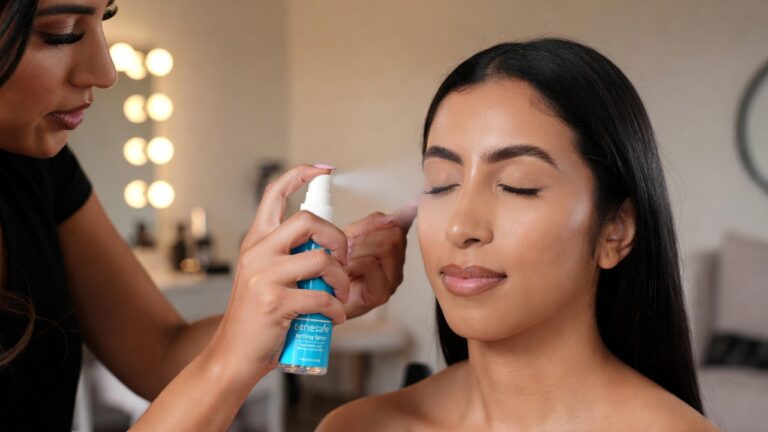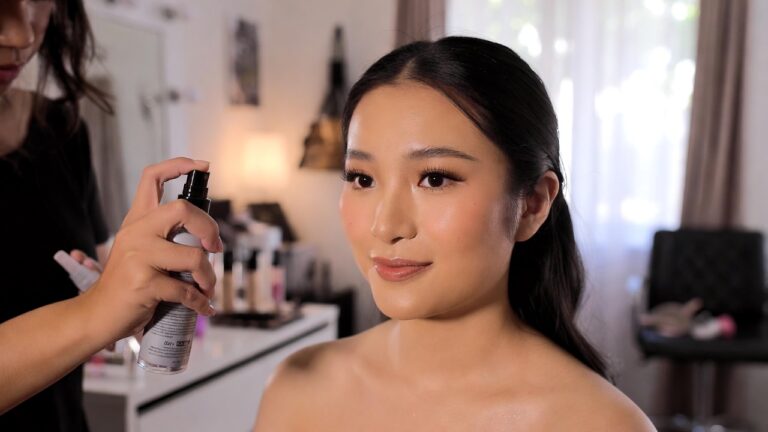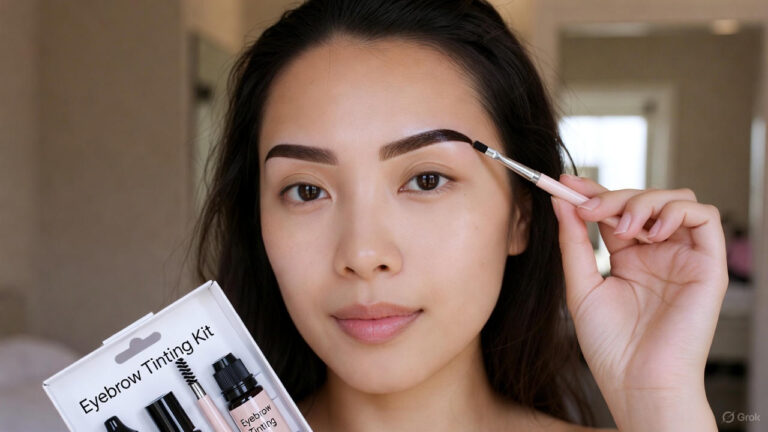Acne, the relentless nemesis of clear skin, affects millions of people worldwide. Understanding the root causes of acne is vital to finding effective solutions. One such crucial factor in acne development is hormones.
In this comprehensive guide, we’ll unravel the intricate relationship between hormones and acne. You’ll learn about the hormonal players, how they contribute to acne, and discover strategies for prevention and treatment.
I. Understanding Acne
The Structure of the Skin
To comprehend the role of hormones in acne, it’s essential to begin with an understanding of the skin’s structure. Our skin, the body’s largest organ, consists of three primary layers: the epidermis, dermis, and subcutaneous tissue.
- Epidermis: The outermost layer, the epidermis, serves as the skin’s protective barrier. It is composed of several sub-layers and contains specialized cells like keratinocytes, which produce the protein keratin, a key component in skin, hair, and nails.
- Dermis: Situated beneath the epidermis, the dermis is home to hair follicles, sweat glands, sebaceous (oil) glands, blood vessels, and nerves. It is in the dermis that the majority of acne development occurs.
- Subcutaneous Tissue: This deeper layer contains fat, which provides insulation and cushioning. It connects the dermis to underlying structures.
Formation of Acne Lesions
Acne, the common skin condition that plagues individuals of all ages, arises due to a complex interplay of factors. At its core, acne develops within the hair follicles in the dermis. To understand how acne forms, it’s essential to recognize the following:
- Sebum Production: The sebaceous glands, found alongside hair follicles, produce an oily substance known as sebum. Sebum serves to keep the skin and hair lubricated and acts as a barrier to protect against external elements. However, excessive sebum production can contribute to acne.
- Hair Follicles: Each hair follicle has a tiny canal leading to the skin’s surface. Within these follicles, sebum is transported to the skin’s surface through the follicular canal. It is also where acne lesions form.
- Accumulation of Sebum, Dead Skin Cells, and Bacteria: Acne lesions occur when the hair follicles become clogged. This clogging is typically due to an excessive production of sebum, dead skin cells not shedding properly, and the presence of acne-causing bacteria, most notably Propionibacterium acnes.
Types of Acne
Acne isn’t a one-size-fits-all condition; rather, it takes on various forms, each with distinct characteristics. Some of the common types of acne include:
- Comedonal Acne: This form of acne primarily involves comedones, which are non-inflammatory lesions. Blackheads and whiteheads are examples of comedones.
- Inflammatory Acne: Inflammatory acne manifests as red, swollen, and painful pimples. These occur when the walls of hair follicles rupture, spilling bacteria and debris into the surrounding skin.
- Cystic Acne: Cystic acne is characterized by deep, inflamed, and often painful cysts beneath the skin’s surface. It can lead to scarring and is typically the most severe form of acne.
II. Hormones and Acne
Hormones are the body’s chemical messengers, orchestrating a wide array of vital functions, including growth, metabolism, and the regulation of various physiological processes. When it comes to acne, hormones play a significant role in influencing the skin’s behavior, particularly in relation to sebum production and the overall health of hair follicles.
Hormones Involved in Acne
- Androgens: Androgens are a group of male sex hormones, including testosterone, which are present in both males and females. In the context of acne, androgens are crucial. They stimulate the sebaceous glands to produce sebum, the skin’s natural oil. Improved levels of androgens can result in excess sebum production, contributing to acne development.
- Estrogens: In contrast to androgens, estrogen is a female sex hormone. Estrogen helps regulate sebum production. Fluctuations in estrogen levels can influence acne, particularly in females. For example, some women may experience acne breakouts during their menstrual cycle when estrogen levels fluctuate.
- Insulin: Insulin is a hormone involved in the regulation of blood sugar levels. High levels of insulin can stimulate the sebaceous glands to produce more sebum, potentially leading to acne. This is often influenced by dietary choices and lifestyle factors.
Hormonal Changes During Adolescence
The teenage years are marked by significant hormonal fluctuations as the body matures. These hormonal changes can lead to a surge in androgens, especially in boys. Increased androgen levels stimulate sebaceous gland activity, which can result in oilier skin and a higher likelihood of acne development. This is why acne is a common concern during adolescence.
Hormonal Changes in Adults
Hormonal imbalances aren’t limited to teenagers. Adults can also experience fluctuations in hormone levels that impact their skin. Some key instances of hormonal changes in adulthood include:
- Pregnancy: Pregnancy is characterized by significant shifts in hormones, particularly increased estrogen levels. Some women experience clearer skin during pregnancy, while others may develop pregnancy-related acne.
- Menopause: The hormonal shifts during menopause, characterized by a decrease in estrogen, can influence sebum production and acne development.
- Polycystic Ovary Syndrome (PCOS): PCOS is a hormonal disorder that can lead to an excess of androgens, resulting in acne, among other symptoms.
- Stress: Chronic stress can also lead to hormonal imbalances, which may exacerbate acne. The stress hormone cortisol can influence sebum production and the skin’s inflammatory response.
III. How Hormones Contribute to Acne
Increased Sebum Production
One of the primary ways hormones contribute to acne is by influencing the production of sebum, the skin’s natural oil. Androgens, especially testosterone, stimulate the sebaceous glands to produce more sebum. Here’s how it happens:
Androgens and Sebum Production: Androgens, which are present in both males and females, bind to receptors on sebaceous gland cells. This binding triggers an increase in sebum production.
When androgen levels are elevated, as is common during adolescence and sometimes in adults, sebum production can go into overdrive. Excessive sebum can clog hair follicles and create an ideal environment for acne-causing bacteria to thrive.
Follicular Hyperkeratinization
Hormonal changes can also impact the skin’s ability to shed dead skin cells effectively. Normally, our skin continually sheds dead skin cells to make way for new ones. When this natural shedding process goes awry, it can lead to the accumulation of dead skin cells within the hair follicles. Here’s how it relates to hormones:
Keratinization and Hormones: Hormones can influence the process of keratinization, which is the formation of the tough, fibrous protein keratin in the skin.
When keratinization goes awry, it can cause dead skin cells to become sticky and not shed properly. These cells then combine with sebum, creating a plug within the hair follicle.
Formation of Comedones: This plug within the hair follicle can manifest as either a whitehead (closed comedone) or a blackhead (open comedone). In both cases, it’s the result of the combination of sebum, sticky dead skin cells, and often, the presence of acne-causing bacteria.
Inflammation
Hormones can also play a role in promoting inflammation within the skin, a key factor in the development of acne. Inflamed follicles are more likely to develop into painful, red, and swollen pimples. Here’s how it works:
- Inflammatory Response: Androgens can stimulate the production of inflammatory chemicals within the skin. When a hair follicle becomes clogged with excess sebum and dead skin cells, it creates an ideal environment for the proliferation of bacteria, particularly Propionibacterium acnes. The presence of these bacteria can trigger an inflammatory response in the skin.
- Inflammatory Acne: Inflammatory chemicals and immune responses lead to the formation of inflammatory acne, characterized by red, swollen pimples. These lesions can be painful and are often the more severe and uncomfortable forms of acne.
Role of Hormones in Different Types of Acne
It’s important to note that different hormones may have varying effects on specific types of acne. For instance, androgens often play a more significant role in the development of cystic acne, characterized by deep, painful cysts beneath the skin’s surface.
IV. Factors that Influence Hormonal Acne
Genetics
Family History: If your parents or close relatives had a history of acne, there’s a higher likelihood that you may also develop acne. Genetics can influence factors such as sebum production, skin type, and susceptibility to inflammation.
Diet
High Glycemic Index Foods: Consuming foods with a high glycemic index, such as sugary and processed items, can lead to spikes in blood sugar and insulin levels. Improved insulin levels can stimulate sebum production, contributing to hormonal acne.
Dairy Products: Some studies suggest that dairy products, particularly those with high levels of hormones like growth hormones, may exacerbate acne in some individuals.
Stress
Chronic Stress: Prolonged stress can lead to hormonal imbalances, particularly elevated cortisol levels. High cortisol levels may stimulate sebum production and inflammation, making acne worse.
Medications
Corticosteroids: Certain medications, like corticosteroids, can influence hormone levels, including cortisol, which plays a role in acne development.
Birth Control Pills: Some birth control pills, while designed to regulate hormones, may have an impact on acne. They can either improve or worsen acne, depending on the individual and the type of pill used.
Skincare Products
Comedogenic Products: Using skincare products that contain comedogenic ingredients can exacerbate acne. These ingredients can clog pores and contribute to acne breakouts.
V. Management and Treatment
Managing and treating hormonal acne can be a multifaceted process, involving various strategies to control sebum production, address inflammation, and promote overall skin health. Here, we’ll explore several approaches to manage and treat hormonal acne effectively.
Lifestyle Changes
- Balanced Diet: Adopting a balanced diet can help regulate insulin levels, which, in turn, can control sebum production. Focus on whole foods, fruits, vegetables, lean proteins, and complex carbohydrates. Reducing the intake of high-glycemic index foods is crucial.
- Hydration: Staying well-hydrated supports overall skin health. Drinking enough water can help flush toxins from your body and maintain skin hydration.
- Regular Exercise: Engaging in regular physical activity promotes healthy circulation and can help reduce stress, which is a known trigger for hormonal acne.
- Adequate Sleep: Getting enough sleep is essential for skin regeneration and overall well-being. Aim for 7-9 hours of quality sleep each night.
Topical Treatments
Over-the-counter Products: Over-the-counter topical products containing ingredients like salicylic acid, benzoyl peroxide, or alpha hydroxy acids can help manage mild to moderate acne. These products work by unclogging pores and reducing inflammation.
Prescription Medications: For more severe cases of hormonal acne, dermatologists may prescribe topical treatments with higher concentrations of active ingredients. They may also recommend retinoids to promote skin cell turnover.
Hormone-Based Therapies
Birth Control Pills: Oral contraceptives can be effective in managing hormonal acne in females. Certain birth control pills can regulate hormone levels, particularly androgens, which contribute to sebum production.
Anti-Androgen Medications: In cases where hormonal acne is severe, anti-androgen medications like spironolactone may be prescribed. These medications block the effects of androgens on the skin.
Medical Procedures
Chemical Peels: Chemical peels involve the application of a chemical solution to the skin, which exfoliates and encourages new skin cell growth. This can improve acne and reduce the appearance of acne scars.
Laser Therapy: Various laser and light-based treatments are available to target acne and promote skin healing. These procedures can help reduce inflammation and kill acne-causing bacteria.
Drainage and Extraction: In severe cases of cystic acne, dermatologists may perform drainage and extraction procedures to remove large, painful cysts.
Professional Guidance
Dermatologist Consultation: Seeking guidance from a dermatologist is essential for personalized acne management. A dermatologist can diagnose the type and severity of acne and recommend the most suitable treatment plan.
Patient Education: Dermatologists can also educate patients about proper skincare routines, product selection, and techniques for acne prevention.
Patient Compliance and Patience
It’s crucial to note that managing and treating hormonal acne often requires patience and consistency. Results may take several weeks or months to become noticeable, and it’s essential to follow the treatment plan as recommended by a healthcare professional.
Additionally, every individual’s response to treatment may vary, so what works for one person may not work for another. A dermatologist can help adjust the treatment plan as needed to achieve the best results.
Conclusion
Hormones are undeniably pivotal players in the complex world of acne. Understanding their role and how they contribute to breakouts is the first step toward effective management. Whether you’re a teenager navigating the tumultuous seas of adolescence or an adult facing persistent acne, taking charge of your hormonal health can lead to clearer, more radiant skin. Remember, seeking professional advice is essential for tailored treatment.
Frequently Asked Questions
1. How do hormones play a role in acne?
Hormones influence sebum production, follicular health, and skin inflammation, all of which are key factors in acne development.
2. Are hormones the main cause of acne?
While hormones are a significant factor, other elements like genetics, diet, and skincare routines also play a role in acne.
3. What hormone fights acne?
Estrogen, a female hormone, can help regulate sebum production and, in some cases, combat acne.
4. What are the biggest triggers for hormonal acne?
Hormonal fluctuations during adolescence, pregnancy, menopause, and conditions like PCOS can trigger hormonal acne. Stress and diet can also play a significant role.
5. How do you stop hormonal acne from spreading?
Effective management involves lifestyle changes, topical treatments, hormone-based therapies, and sometimes medical procedures. Consult a healthcare professional for guidance.
6. How do I know if my acne is bacterial or hormonal?
The type of acne can be determined by its appearance and pattern. Hormonal acne typically occurs in specific areas like the jawline and chin.
7. How do you treat hormonal acne naturally?
Natural remedies include maintaining a balanced diet, managing stress, and using gentle skincare products. However, consult a dermatologist for personalized advice.
8. How to tell the difference between stress acne and hormonal acne?
Stress acne often appears suddenly during stressful periods, while hormonal acne may follow a consistent pattern related to hormonal fluctuations. A dermatologist can help with a precise diagnosis.



